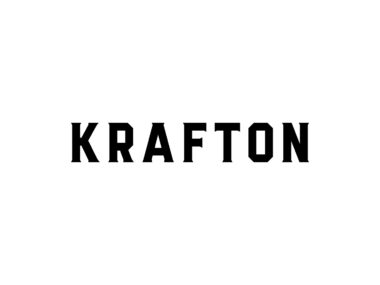What If You Saw the Layoff Coming?
It’s easy to say “no one saw it coming” when mass layoffs happen, but often, there are signs. Just not the kind companies want you to notice. Executive reshuffling, delayed projects, sudden hiring freezes, and vague corporate restructuring announcements aren’t harmless changes. They’re signals. If you’re paying attention, you can at least soften the blow of what comes next.
The problem is: workers are trained to ignore these signs. We’re taught to focus on doing our jobs well and leave the business decisions to the people at the top. But the people at the top aren’t always making decisions with workers in mind. In fact, they rarely suffer the consequences when things go wrong. Layoffs are often the result of bad leadership. Yet, it’s the employees who are left picking up the pieces.
So let’s start with better questions than “How can AI help you cope?” Let’s ask: How can workers prepare realistically for layoffs? What does real support actually look like?
What’s Missing from the AI Advice
Microsoft announced another round of layoffs, this time affecting around 9,000 employees, many in Xbox’s game studios. One executive, Matt Turnbull, took to LinkedIn with advice.
He recommended using AI tools like Microsoft Copilot or ChatGPT to ease the emotional toll of being laid off. He suggested prompts for career coaching, help reframing negative self-talk, and assistance writing resumes or planning next steps. But the post didn’t land the way he hoped. It was deleted soon after due to widespread backlash.
Why? Because telling someone to use the company’s AI right after the company lays them off is tone-deaf at best, insulting at worst. It also reflects a growing trend in tech leadership: treating AI as a catch-all fix, even for deeply human problems.
Grief, stress, and uncertainty are not code errors. They’re not productivity bottlenecks. When someone’s been laid off, they don’t want a pep talk or a chatbot. They want answers. They want clarity. They want to know that the people who made the decision to cut their job are also being held accountable. Instead, they’re told to “optimize their healing journey.”
That’s not support. That’s deflection.
Holding the Right People Accountable
Let’s be blunt: many layoffs aren’t necessary. They’re strategic. They’re done to boost stock prices, cut costs before earnings calls, or reverse bad executive decisions without firing the executives. But that’s rarely how it’s framed.
The workforce gets blamed for being too big. For having “redundancies.” For projects that didn’t meet deadlines. But who approved those projects? Who misjudged timelines? Who flooded departments with hires they couldn’t retain?
That’s executive failure. And as long as executives stay insulated from consequences, nothing will change.
Until we normalize asking:
- Why was this project greenlit without a clear path forward?
- Why did this team grow so rapidly without long-term planning?
- Why is this company prioritizing AI tools over human support?
…then we’ll keep seeing the same cycle: execs make risky bets, workers pay the price, and tech leaders suggest AI as a bandage.
What Real Support Could Look Like
Instead of asking laid-off employees to feed prompts into a chatbot, what if companies took accountability and used their tools to help in meaningful ways?
Imagine a system where, upon termination, workers receive tailored advice. Not from a chatbot, but from the company’s own internal data:
“We’re consolidating roles like yours. Based on current hiring trends in the industry, here are areas where demand is growing. You may want to consider upskilling in x, y, and z. Here are verified job leads, not ghost jobs, that match your profile.”
This kind of practical, customized guidance would help workers actually get back on their feet. It would acknowledge what was lost while offering a path forward grounded in real opportunities. Not vague suggestions to network more or “pivot.”
Even better? Build it into the severance process. Don’t wait for workers to come begging for help.
Can AI Offer Emotional Support? Sometimes. Be Careful.
Let’s also be fair: AI can provide emotional support for some people, in specific situations. Research shows that AI chatbots can reduce psychological distress, especially when people feel isolated and don’t have other resources. In mild to moderate cases of depression or emotional burnout, some users even prefer talking to AI because it feels nonjudgmental and always available.
But there are important caveats:
- AI is not therapy. It can’t respond to complex trauma or crises.
- It doesn’t truly understand. The empathy is simulated, not real.
- The effect isn’t consistent. Some people experience comfort. Others find it unsettling or impersonal.
- It can’t replace human connection. No matter how helpful a chatbot might feel in the moment, it’s not a substitute for real support systems. Friends, family, colleagues, or professionals.
If you want to use AI to vent, reflect, or organize your thoughts, that’s fine. But don’t expect it to fully carry you through the emotional aftermath of a layoff. That’s not what it’s made for. Pretending otherwise can be harmful.
The Real Work Is in Preparation Not Prompt Engineering
Let’s say this clearly: no one should be expected to manage a layoff with perfect grace or efficiency. Job loss is a destabilizing event. But we can normalize being prepared, especially in industries like tech and games where instability is common.
Ask yourself:
- Is your department growing faster than the projects it supports?
- Are there clear roadmaps or just buzzwords?
- Do executives have a pattern of abrupt pivots or vague direction?
If the answers raise red flags, don’t ignore them. Start looking. Quietly, if you need to. Don’t wait for the company to care more about your livelihood than their quarterly earnings. History shows they won’t.
Empathy First, Tools Second
There’s nothing wrong with using AI to help with your next steps. But timing, context, and delivery matter. When a company lays you off and immediately points you to its own AI products, it feels like you’re being turned into a case study for how resilient automation makes workers.
That’s not empathy. That’s PR.
Real support would mean fewer layoffs caused by poor planning. It would mean helping people transition with dignity, not just convenience. It would mean executives facing the consequences of their decisions before workers do.
Until then, let’s at least be honest: layoffs aren’t just a workforce issue. They’re a leadership failure. And no AI prompt can fix that.






